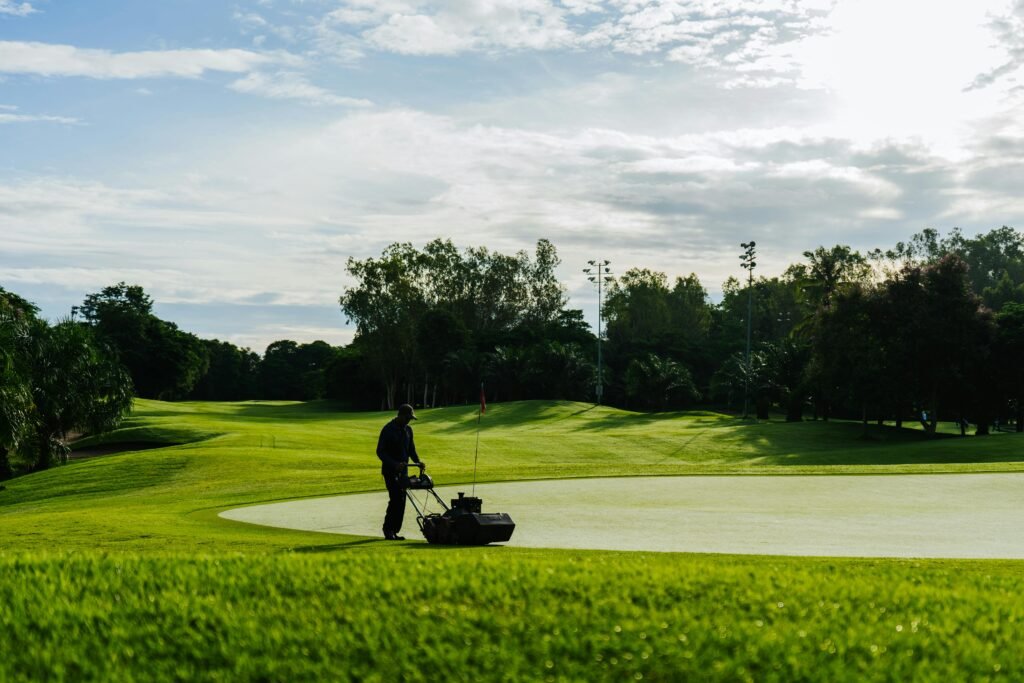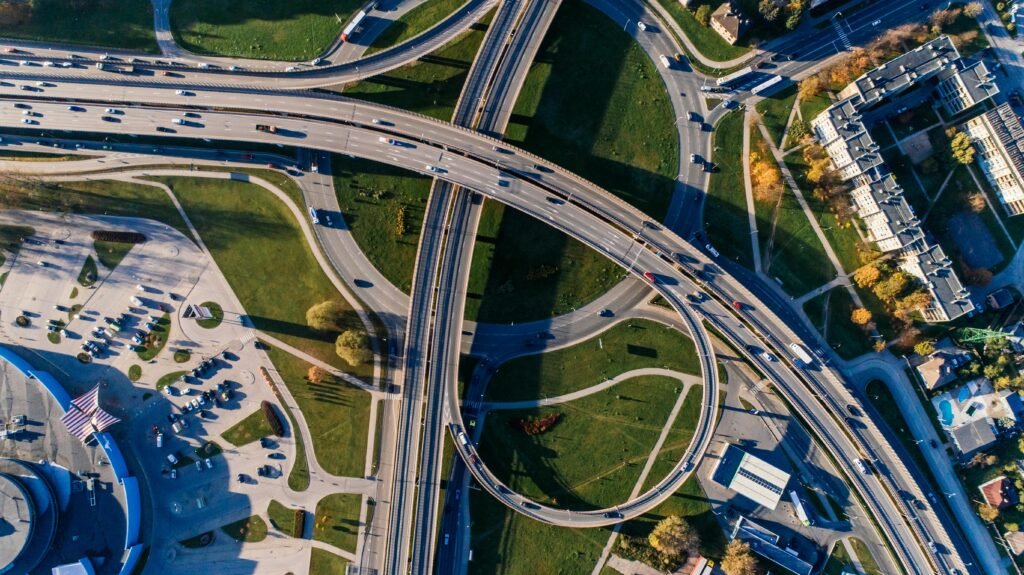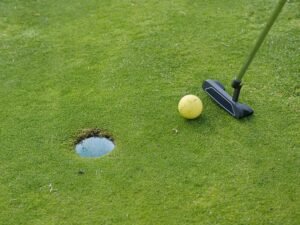
I hope you enjoy reading this blog post.
If you are looking professional golf manufacturer.
Golf Course Siting Requires Exploration
March 20, 2025
The location selection of golf course is a comprehensive and complex task, which is directly related to the construction cost, operation efficiency, player experience and ecological environment.
The ideal location needs to consider a variety of factors, the following will be an in-depth analysis of these requirements, and give the corresponding location suggestions.
Natural Conditions Are The Foundation

Topography: Create A Unique Style Of The Course
Topography is one of the key factors in the location of golf courses. The ideal site should have moderate topographic relief, such as moderate hills, slopes and valleys.
These can give the course a rich sense of hierarchy and interest, make the hole design more varied, enhance the challenge of playing.
Taking the mountainous terrain as an example, Yunnan Yulong Snow Mountain Golf Course is a successful example. It is located in Lijiang, Yunnan Province, backed by the majestic Jade Dragon Snow Mountain.
The course takes full advantage of the natural terrain of the mountains, and the fairway winds through the mountains, rising and falling, with a maximum drop of 200 meters. The high altitude makes the air thinner, and the golf ball travels farther, making it harder to hit.
At the same time, the surrounding snow-capped mountains, forests, lakes and other natural landscapes are integrated, and the scenery is different in the four seasons.
The mountain flowers bloom in spring, the grass is green in summer, the forests are dyed in autumn, and the snow-capped mountains are white in winter. Attracted a large number of domestic and foreign tourists to come to experience.
The representative of the seaside terrain, St Andrews Old Course is located in the small town of St Andrews on the east coast of Scotland. As the birthplace of golf, it has a typical Links-style, flat and open terrain, and strong sea breezes.
The course is close to the North Sea, and the unique coastal dune landscape adds natural obstacles and challenges to the course.
The famous “Road Hole” has an ancient stone wall and road on one side of the fairway and the sea on the other. There is also a huge bunker behind the green, which is extremely difficult to hit.
The surrounding strong town atmosphere and profound golf culture not only attracted many golf enthusiasts to come to pilgrimage, but also successfully held several top-level events such as the British Open.
Of course, the terrain should not be too complex or steep, otherwise it will greatly increase the construction cost and maintenance difficulty, and may endanger the safety and comfort of players.
A standard 18-hole golf course usually covers an area of 60-100 hectares, but the specific area will vary depending on the terrain and design needs. For example, mountain golf courses may require larger areas to plan fairways and greens due to terrain limitations.
At the same time, a site with natural features such as lakes, rivers and woods is more ideal.
Water can be used as an obstacle to increase the difficulty of playing, and can beautify the landscape of the course. The trees both enhance the beauty and act as a natural divider, enhancing the independence and privacy between the holes.
Suggestion: In topographic and geomorphic surveys, professional mapping teams should be hired in advance. The terrain of the site is mapped in detail and contour maps are drawn in order to accurately analyze the relief and trend of the terrain.
For areas with complex terrain, the cost of construction and the difficulty of later maintenance should be fully assessed. Make a reasonable construction plan. If the site lacks natural geomorphic features, moderate topographic transformation can be considered.
Such as making mounds, digging artificial lakes, etc., to increase the interest of the court, but pay attention to controlling the cost and the impact on the ecological environment.
Soil Conditions: Determine The Basis For Lawn Growth
Soil conditions play a decisive role in the growth of golf course lawns.
The most suitable soil type is sandy loam soil, which has good air permeability and water permeability, creating favorable conditions for the growth and development of turf roots. It can ensure the health and beauty of the lawn and provide a stable surface for the ball.
Try to avoid soil with high clay content, because clay water permeability is poor, easy to collect water. This will not only affect the growth of the grass, but also make the court become muddy in wet weather, seriously affecting the playing experience.
In addition, soil fertility should be kept moderate. The fertility is too high, the lawn may grow too prosperous, increase the maintenance cost and difficulty. If the fertility is too low, it will lead to poor growth of the lawn, dull color, and weakened resistance to pests and diseases.
Therefore, comprehensive soil fertility testing and improvement is usually required before stadium construction. To meet the growth needs of the lawn.
Suggestion: In the site selection stage, the soil in different areas should be sampled at multiple points and sent to a professional laboratory for testing and analysis. Understand soil texture, pH, fertility and other indicators.
If soil conditions are not ideal, soil improvement programs can be planned in advance. For example, adding sand to improve the water permeability of clay, applying organic fertilizer to adjust soil fertility.
The cost and feasibility of soil improvement should also be considered. Ensure that the improved soil can meet the needs of lawn growth for a long time.
Climate Factors: Driving Operations And Experiences
Climate factors play a central role in the selection of golf courses. In terms of temperature, the annual average temperature at the location of the course should be suitable for golf. Generally 15-25 ℃ is more ideal. Extreme heat or cold can adversely affect lawn growth and playing comfort.
In the tropics, for example, lawns require special care during high summer temperatures. In cold areas, winter lawns may need to be covered to keep warm or closed.
Light is equally important, adequate light is the key to the healthy growth of the lawn, generally requiring more than 2000 hours of sunshine throughout the year.
Good light can promote the full photosynthesis of the lawn to ensure the density and color of the lawn.
Precipitation and humidity cannot be ignored. The area where the annual precipitation is between 600 and 1200 mm and the distribution is uniform is more suitable.
Too much precipitation is easy to cause water on the court, affecting the growth of playing and turf. Too little precipitation requires a lot of irrigation, increasing operating costs.
Air humidity is generally more appropriate at 40%-70%, too high or too low may cause lawn diseases and pests.
Suggestion: Collect local meteorological data for at least 10 consecutive years. The variation rules and extreme values of climate elements such as temperature, light, precipitation and humidity were analyzed.
For areas where the temperature is not suitable, appropriate grass species should be selected and corresponding conservation measures should be formulated. If you choose cold-resistant grass in cold areas, equipped with lawn heating equipment. Select heat-resistant grass seeds in high temperature areas and install cooling spray systems.
To solve the problem of uneven precipitation, rainwater collection systems can be built to store excess rainwater for irrigation in times of drought. At the same time, the drainage system of the course is optimized to ensure that it can be drained in time when there is a rainstorm.
Water Supply: Ensure The Lifeblood Of Daily Operation
The golf course lawn area is vast, the demand for water is huge. In general, an 18-hole golf course consumes about 300,000-500,000 cubic meters of water per year. Hence the need for a stable and adequate water supply.
The course can rely on surface water, such as nearby lakes and rivers. Or by drilling Wells to draw groundwater to meet irrigation needs.
At the same time, the quality of irrigation water also has strict requirements. The pH (pH) is generally between 6.5-8.5, and the salt content cannot be too high. Otherwise, it will cause damage to the lawn and affect its normal growth and health.
Recommendation: Conduct a detailed survey of water sources around potential sites. Assess surface water flow and water level changes, as well as groundwater reserves and water level depths.
Communicate with the local water department to understand the water resource allocation and use policy to ensure the legality and stability of water use. If the water quality of the source is not up to standard, the water treatment plan should be planned in advance.
Such as the installation of filtration equipment, the use of chemical treatment methods to meet the requirements of irrigation water.
External Conditions Are Supportive

Transportation Convenience: Build A Bridge Connecting Tourists
The accessibility of a golf course is crucial to its operation. The distance from the main city should not be too far, generally within 1-2 hours of the car is more suitable. This ensures that the stadium has a relatively independent and quiet environment, and can be easily accessed by players and spectators.
In addition, there needs to be a good transportation network near the stadium. Highways, railways, etc., are included so that players and spectators can travel smoothly from different areas.
Such as the Augusta National Golf Club in the United States, the surrounding transportation is convenient. Every year during the Masters, a large number of spectators can easily reach the course.
Recommendation: When choosing a site, give priority to areas close to major cities and transportation hubs.
Traffic flow analysis software is used to assess congestion on the roads around the stadium during peak hours. To ensure smooth movement of players and spectators during peak periods such as matches and holidays.
If the transportation facilities around the stadium are not perfect, you can negotiate with the local government. Strive to promote the improvement of surrounding transportation infrastructure while building the stadium.
Environmental Protection And Policy Regulations: Adhere To The Bottom Line Of Sustainable Development
Site selection must comply with local environmental protection laws and policies. Avoid building courses in sensitive areas such as ecological reserves and water sources.
In the course of construction and operation, we should attach great importance to ecological protection. Minimize the damage to the surrounding ecological environment, protect the local animal and plant resources and ecological balance.
At the same time, the selected land must conform to the local land use plan. Handle relevant construction permit and approval procedures.
Understand local policies and regulations, including tax policies, land tenure, etc. It is important to ensure the legitimacy and stability of the construction and operation of the stadium.
Suggestion: Set up a professional policy and regulation research team before the project starts. In-depth study of local environmental protection laws and regulations, land use planning and related policy documents.
Communicate with the local environmental protection department, planning department, etc. to understand the approval process and requirements. Ensure site selection and construction plans comply with policy and regulatory requirements.
In the process of construction and operation, an environmental monitoring mechanism will be established to regularly monitor the surrounding ecological environment. Timely adjustment of operational strategies to reduce environmental impact.
The location of golf course is a complex system project. It is necessary to consider the requirements of natural conditions and external conditions. The reasonable site selection suggestions are given according to the actual situation.
Only by fully meeting these requirements can we build a golf course that provides a quality playing experience. Achieve sustainable development.
FAQS
How do I choose the right golf ball for my skill layer?
Beginners should start with two-layer balls for ease of use and affordability. Intermediate players might benefit from three-layer balls for better control.
Advanced players can explore four or five-layer options to enhance their performance.
Are more layers always better?
Not necessarily. While more layers can offer advanced performance features, they may not be suitable for every player.
Beginners might find multi-layer balls harder to control, while more experienced golfers can benefit from the added complexity.
What is Fuli lead time?
Usually, we ship orders in 2 weeks. But it will take a little longer if we have the heavy burden of production tasks. It also takes more time for customized products.
Can the weather affect the choice of golf ball?
Absolutely. In colder weather, a softer ball might provide better feel, while in warmer conditions, a firmer ball might maintain distance better.
Additionally, wet conditions may call for balls that offer better traction and control.
How often should I change my golf balls?
Golf balls should be replaced if they show visible signs of damage (scrapes, cuts) or if you notice a decline in performance.
Regular players may want to change balls every few rounds, while casual players can go longer.
Leave a Reply
Your email address will not be published. Required fields are marked *

Are you looking for
GOLF BALL?
Offers Suitable Golf For Wholesalers And Professionals















